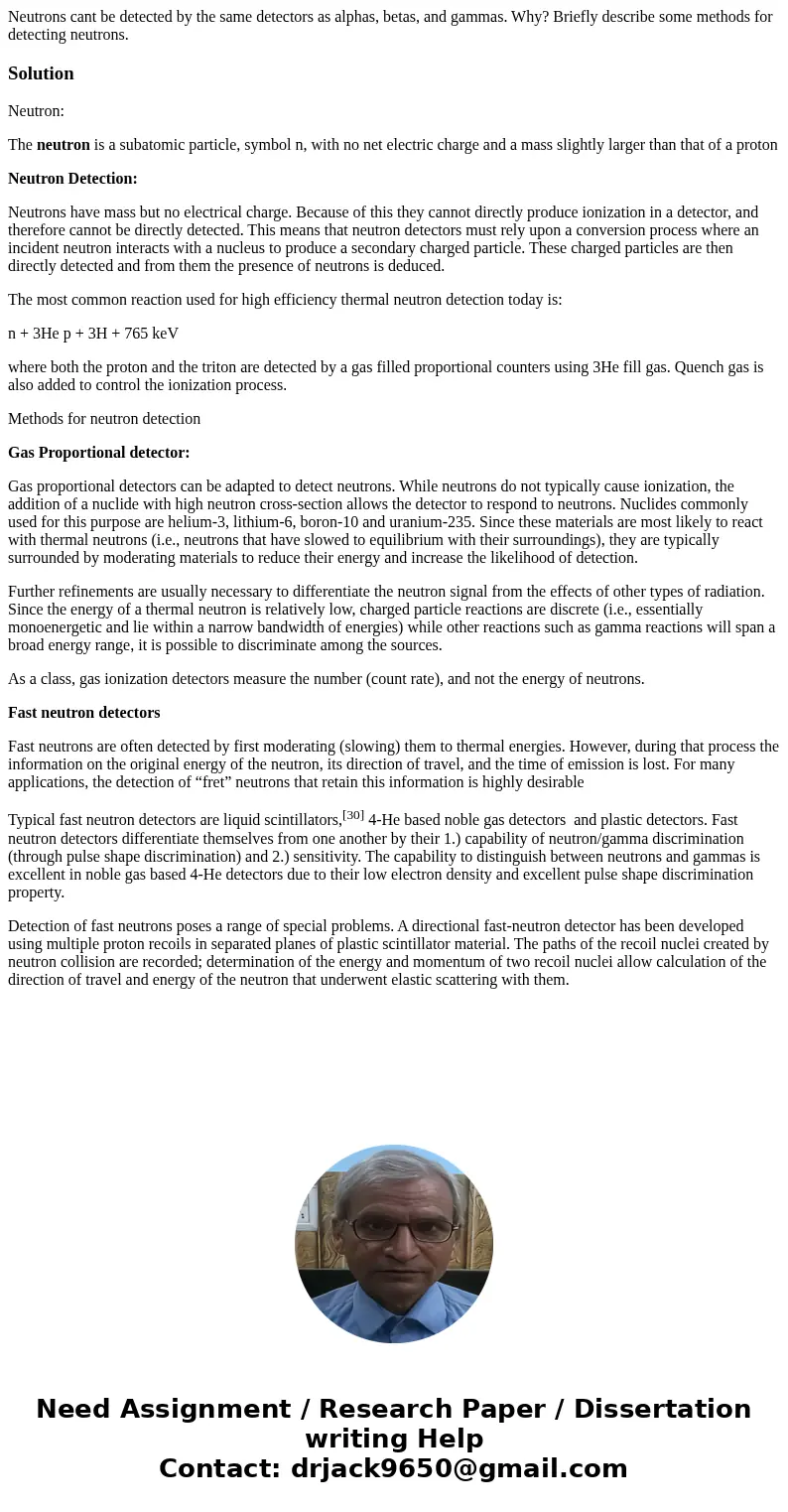Neutrons cant be detected by the same detectors as alphas be
Solution
Neutron:
The neutron is a subatomic particle, symbol n, with no net electric charge and a mass slightly larger than that of a proton
Neutron Detection:
Neutrons have mass but no electrical charge. Because of this they cannot directly produce ionization in a detector, and therefore cannot be directly detected. This means that neutron detectors must rely upon a conversion process where an incident neutron interacts with a nucleus to produce a secondary charged particle. These charged particles are then directly detected and from them the presence of neutrons is deduced.
The most common reaction used for high efficiency thermal neutron detection today is:
n + 3He p + 3H + 765 keV
where both the proton and the triton are detected by a gas filled proportional counters using 3He fill gas. Quench gas is also added to control the ionization process.
Methods for neutron detection
Gas Proportional detector:
Gas proportional detectors can be adapted to detect neutrons. While neutrons do not typically cause ionization, the addition of a nuclide with high neutron cross-section allows the detector to respond to neutrons. Nuclides commonly used for this purpose are helium-3, lithium-6, boron-10 and uranium-235. Since these materials are most likely to react with thermal neutrons (i.e., neutrons that have slowed to equilibrium with their surroundings), they are typically surrounded by moderating materials to reduce their energy and increase the likelihood of detection.
Further refinements are usually necessary to differentiate the neutron signal from the effects of other types of radiation. Since the energy of a thermal neutron is relatively low, charged particle reactions are discrete (i.e., essentially monoenergetic and lie within a narrow bandwidth of energies) while other reactions such as gamma reactions will span a broad energy range, it is possible to discriminate among the sources.
As a class, gas ionization detectors measure the number (count rate), and not the energy of neutrons.
Fast neutron detectors
Fast neutrons are often detected by first moderating (slowing) them to thermal energies. However, during that process the information on the original energy of the neutron, its direction of travel, and the time of emission is lost. For many applications, the detection of “fret” neutrons that retain this information is highly desirable
Typical fast neutron detectors are liquid scintillators,[30] 4-He based noble gas detectors and plastic detectors. Fast neutron detectors differentiate themselves from one another by their 1.) capability of neutron/gamma discrimination (through pulse shape discrimination) and 2.) sensitivity. The capability to distinguish between neutrons and gammas is excellent in noble gas based 4-He detectors due to their low electron density and excellent pulse shape discrimination property.
Detection of fast neutrons poses a range of special problems. A directional fast-neutron detector has been developed using multiple proton recoils in separated planes of plastic scintillator material. The paths of the recoil nuclei created by neutron collision are recorded; determination of the energy and momentum of two recoil nuclei allow calculation of the direction of travel and energy of the neutron that underwent elastic scattering with them.

 Homework Sourse
Homework Sourse